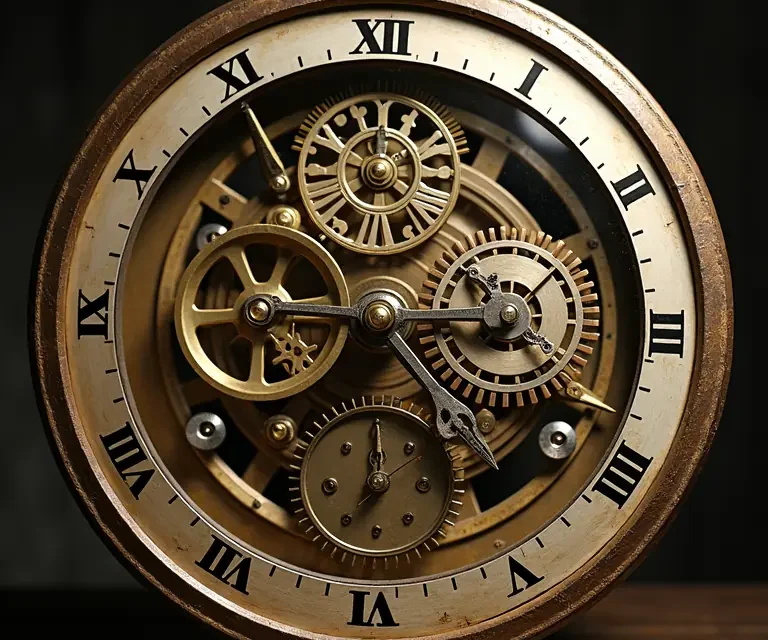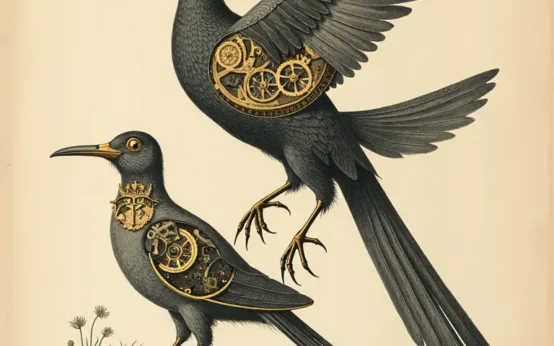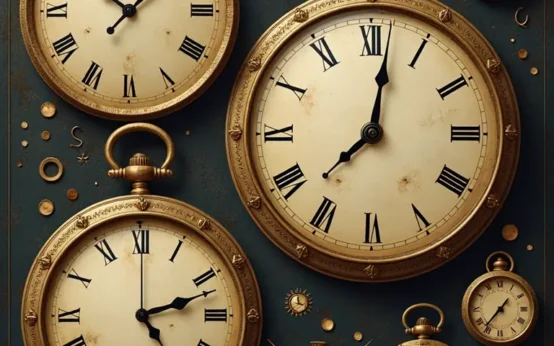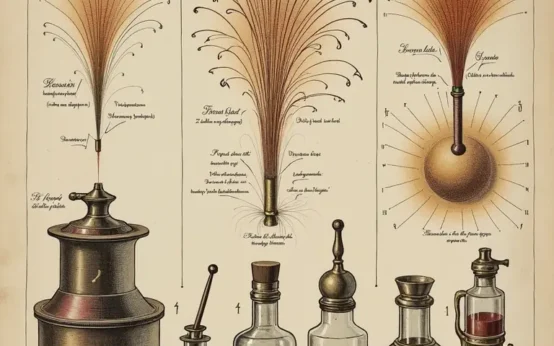For millennia, humanity has been obsessed with measuring time. This isn’t merely about scheduling appointments or knowing when to plant crops; it’s a fundamental drive to understand our place in the universe, to impose order on the seemingly chaotic flow of existence. And throughout this pursuit, the evolution of clockmaking, while technologically dramatic, reveals a surprisingly consistent set of principles and challenges. From the earliest water clocks to the astonishing precision of atomic clocks, the core problem remains the same: creating a regular, measurable interval that can be used as a standard for timekeeping. Let’s embark on a journey through this fascinating history.
The Dawn of Timekeeping: Early Civilizations and Water Clocks
Before mechanical clocks, there were sundials, relying on the sun’s movement to cast shadows. However, sundials are useless at night or on cloudy days. This limitation drove the development of the first true clocks – those that didn’t depend on direct sunlight. The earliest known timekeeping devices appeared in ancient Egypt and Mesopotamia around the 16th century BC. These weren’t clocks as we think of them, but rather devices for measuring time intervals. They used observations of stars, and later, water clocks (clepsydrae).
Water clocks operated on a simple principle: the regulated flow of water. A container would fill with water at a constant rate, and markings on the inside indicated the passage of time. Early versions were outflow clocks – water dripped out of a container. Later, inflow clocks, where water filled a container, became more common. The key to accuracy lay in controlling the water flow, which was surprisingly difficult. Variations in water pressure, temperature, and the size of the opening all affected the rate. Despite these challenges, water clocks represented a significant leap forward, providing a continuous and independent measure of time.
The ancient Greeks and Romans adopted and refined water clock technology. The Greeks, particularly, focused on improving the accuracy and reliability of these devices. Ctesibius, a Hellenistic inventor, is credited with creating sophisticated water clocks that used siphons and other mechanisms to regulate water flow more precisely. These clocks even incorporated automata – small figures that moved to indicate the time, foreshadowing the complex mechanisms of later clocks.
The Mechanical Revolution: Gears, Pendulums, and Springs
The next major breakthrough came with the development of mechanical clocks in medieval Europe, around the 14th century. These clocks didn’t spring into existence overnight; they were the result of centuries of accumulated knowledge in metallurgy, mathematics, and engineering. The crucial innovation was the escapement mechanism.
The escapement controls the release of energy from a power source – initially, a hanging weight – in a controlled manner. It’s the “ticking” sound you associate with older clocks. Early escapements were quite crude, but they allowed for the creation of clocks that didn’t require constant human intervention to reset. These first mechanical clocks were large, complex devices usually installed in towers, chiming the hours for the community.
The 17th century witnessed two pivotal developments. The first was the introduction of the pendulum clock by Christiaan Huygens in 1656. The pendulum, swinging with a remarkably consistent period, provided a vastly improved timekeeping regulator. Pendulum clocks were far more accurate than anything that had come before. The second was the invention of the balance spring (or hairspring) by Robert Hooke and Christiaan Huygens, enabling the creation of portable clocks and watches. This innovation allowed for the miniaturization of clock mechanisms, bringing timekeeping to the individual. Before this, personal timekeeping was largely limited to hourglasses and portable sundials.
The Quest for Marine Timekeeping: Longitude and the Chronometer
While accurate clocks were becoming commonplace on land, accurately determining time at sea remained a significant challenge. This wasn’t just a matter of convenience; it was a matter of life and death. Determining longitude – your east-west position – requires knowing the difference between local time and Greenwich Mean Time (GMT). A difference of one hour equates to 15 degrees of longitude. Without an accurate clock, sailors were effectively lost at sea, unable to navigate safely.
For centuries, sailors relied on dead reckoning – estimating their position based on speed, time, and direction. But this method was prone to errors, leading to shipwrecks and countless lives lost. The British government offered a substantial reward to anyone who could devise a method for determining longitude accurately at sea. The solution came in the form of the marine chronometer, perfected by John Harrison in the 18th century.
Harrison’s chronometers were remarkably robust and accurate, able to withstand the harsh conditions of a sea voyage. He spent decades refining his designs, overcoming challenges related to temperature fluctuations, motion, and corrosion. His success revolutionized navigation, making long-distance sea travel safer and more efficient. The story of Harrison and his chronometers is a testament to the ingenuity and perseverance required to solve a complex practical problem. You can learn more about the consistent application of scientific principles in seemingly disparate fields, like pottery, by examining the history of pigments and their trade.
The 19th and 20th Centuries: Electrification, Quartz, and the Atomic Age
The 19th century saw the widespread adoption of mass production techniques, making clocks and watches more affordable and accessible. The introduction of electric clocks in the late 19th century marked another significant step forward. Electric clocks were powered by batteries or the electrical grid, eliminating the need for winding.

However, even electric clocks relied on mechanical movements. The next major revolution came with the development of the quartz clock in the 1920s. Quartz crystals exhibit piezoelectricity – they vibrate at a precise frequency when subjected to an electric field. This vibration can be used to create a highly accurate timekeeping oscillator. Quartz clocks were significantly more accurate than mechanical clocks, and they quickly became the dominant technology. The consistency of quartz’s vibration is a fascinating example of physics at work – much like the consistent predictions found in traditional weather folklore.
But the quest for even greater accuracy didn’t stop there. The 20th century also ushered in the atomic age, and with it, the atomic clock. Atomic clocks don’t rely on mechanical movements or quartz crystals. Instead, they use the natural vibrations of atoms – typically cesium, rubidium, or hydrogen – as their timekeeping standard. These atomic vibrations are incredibly stable and predictable, making atomic clocks the most accurate timekeeping devices ever created.
Atomic clocks are used in a wide range of applications, from synchronizing global communication networks to conducting fundamental scientific research. They are essential for technologies like GPS, which relies on precise time measurements to determine location. Modern atomic clocks are so accurate that they lose or gain only one second in millions of years. The principles of knot tying, another field demanding precision and consistency, can be found here.
The Enduring Principles: A Consistent Thread Through Time
Looking back at the history of clockmaking, several consistent themes emerge. First, there’s the fundamental need for a regular, repeatable process. Whether it’s the flow of water, the swing of a pendulum, the vibration of a quartz crystal, or the oscillations of an atom, all clocks rely on a consistent interval to measure time.
Second, there’s the constant struggle to minimize external influences. Temperature changes, friction, gravity, and electromagnetic interference can all affect the accuracy of a clock. Clockmakers have always sought ways to isolate the timekeeping mechanism from these disturbances. This pursuit of isolation and control echoes the meticulous attention to detail found in other crafts, like the development of vintage camera lenses, where optical precision is paramount.
Third, there’s the drive for miniaturization and portability. From the massive tower clocks of the Middle Ages to the tiny atomic clocks used in satellites, there’s been a constant effort to make clocks smaller, lighter, and more convenient.
Finally, and perhaps most importantly, the history of clockmaking demonstrates the power of human ingenuity. Each new generation of clocks has built upon the knowledge and innovations of its predecessors, pushing the boundaries of accuracy and precision. The evolution from sundials to atomic clocks is a remarkable achievement, a testament to our enduring fascination with time and our relentless pursuit of its accurate measurement. The consistent branding strategies employed over decades, seen in brand name etymology, mirror this long-term commitment to refinement and improvement.
The Future of Timekeeping
What does the future hold for timekeeping? Researchers are exploring new technologies, such as optical lattice clocks, which promise even greater accuracy than current atomic clocks. These clocks use lasers to trap and cool atoms, creating an environment where they can oscillate with exceptional stability.
Beyond the pursuit of ever-greater accuracy, there’s also growing interest in developing more robust and reliable timekeeping systems for space exploration. Accurate timekeeping is crucial for navigation, communication, and scientific experiments in space. And as our understanding of the universe deepens, the need for precise time measurements will only become more critical.
The story of clockmaking is far from over. It’s a continuing saga of innovation, driven by our fundamental desire to understand and measure the passage of time. And as we continue to refine our timekeeping technologies, we’ll undoubtedly gain new insights into the nature of time itself.


 The Curious Mechanics of Automaton Birds: A History of Feathered Clockwork
The Curious Mechanics of Automaton Birds: A History of Feathered Clockwork  The Curious Mechanics of Celestial Globes: Mapping the Heavens in Miniature
The Curious Mechanics of Celestial Globes: Mapping the Heavens in Miniature  The Curious Kinship of Clocks and Calendars: A History of Time’s Dual Measurement
The Curious Kinship of Clocks and Calendars: A History of Time’s Dual Measurement  The Surprisingly Consistent Science of Historical Weather Vanes – Art, Meteorology & Directional Lore
The Surprisingly Consistent Science of Historical Weather Vanes – Art, Meteorology & Directional Lore  The Unexpectedly Consistent Science of Early Firework Composition: Alchemy, Aesthetics & Aerial Displays
The Unexpectedly Consistent Science of Early Firework Composition: Alchemy, Aesthetics & Aerial Displays  The Surprisingly Consistent Logic of Traditional Herbal Remedies: Beyond Folklore, a History of Observation
The Surprisingly Consistent Logic of Traditional Herbal Remedies: Beyond Folklore, a History of Observation